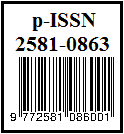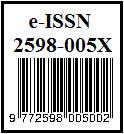Formulasi Strategi Pemasaran Produk Maria (Curcuma zedoria) Hand Sanitizer di Tengah Pandemi COVID-19
DOI:
https://doi.org/10.35814/jrb.v4i1.1604Keywords:
Formulation, Hand Sanitizer, Products, QSPM, Marketing StrategyAbstract
Maria hand sanitizer is an innovative product of hand sanitizer based on natural ingredients which formulated from Curcuma zedoria which was produced during the Covid-19 phenomenon. However, as a company that is new to this industry, a reliable and precise marketing strategy is needed. An effective and efficient strategy must be developed by the company by looking at the opportunities, strengths, threats and weaknesses it faces. Through this marketing strategy analysis, it is hoped that the company will be able to determine the right marketing strategy so that it can continue to survive and develop an appropriate competitive strategy to face all possible changes that occur in the company environment. This research method is comparative, which is not conducting experiments on the object of research, but only determining the right strategy for the company in facing competition according to the Quantitative Strategic Planning Matrix (QSPM) matrix. The research data used are quantitative and qualitative data obtained from internal and external factors in the form of primary data and secondary data. The results showed that internal factors that affect product sales are strengths and weakness, while external factors are opportunities and threats. The formulation of alternative marketing strategies obtained based on external and internal factors is collaboration with partners, product differentiation, joint promotion and for reach a wider market thereby increasing sales.


.gif)













